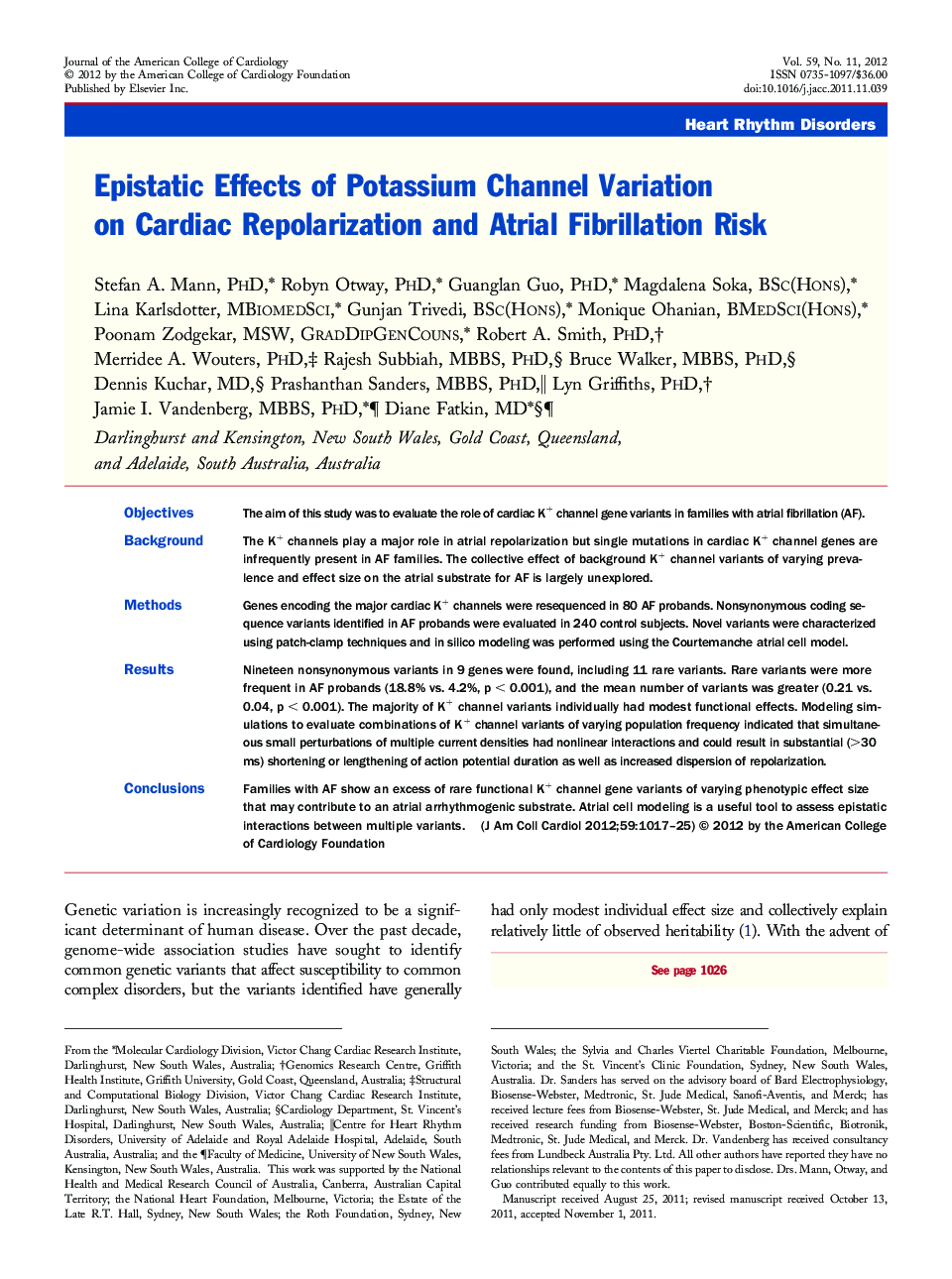| Article ID | Journal | Published Year | Pages | File Type |
|---|---|---|---|---|
| 2949069 | Journal of the American College of Cardiology | 2012 | 9 Pages |
ObjectivesThe aim of this study was to evaluate the role of cardiac K+ channel gene variants in families with atrial fibrillation (AF).BackgroundThe K+ channels play a major role in atrial repolarization but single mutations in cardiac K+ channel genes are infrequently present in AF families. The collective effect of background K+ channel variants of varying prevalence and effect size on the atrial substrate for AF is largely unexplored.MethodsGenes encoding the major cardiac K+ channels were resequenced in 80 AF probands. Nonsynonymous coding sequence variants identified in AF probands were evaluated in 240 control subjects. Novel variants were characterized using patch-clamp techniques and in silico modeling was performed using the Courtemanche atrial cell model.ResultsNineteen nonsynonymous variants in 9 genes were found, including 11 rare variants. Rare variants were more frequent in AF probands (18.8% vs. 4.2%, p < 0.001), and the mean number of variants was greater (0.21 vs. 0.04, p < 0.001). The majority of K+ channel variants individually had modest functional effects. Modeling simulations to evaluate combinations of K+ channel variants of varying population frequency indicated that simultaneous small perturbations of multiple current densities had nonlinear interactions and could result in substantial (>30 ms) shortening or lengthening of action potential duration as well as increased dispersion of repolarization.ConclusionsFamilies with AF show an excess of rare functional K+ channel gene variants of varying phenotypic effect size that may contribute to an atrial arrhythmogenic substrate. Atrial cell modeling is a useful tool to assess epistatic interactions between multiple variants.
